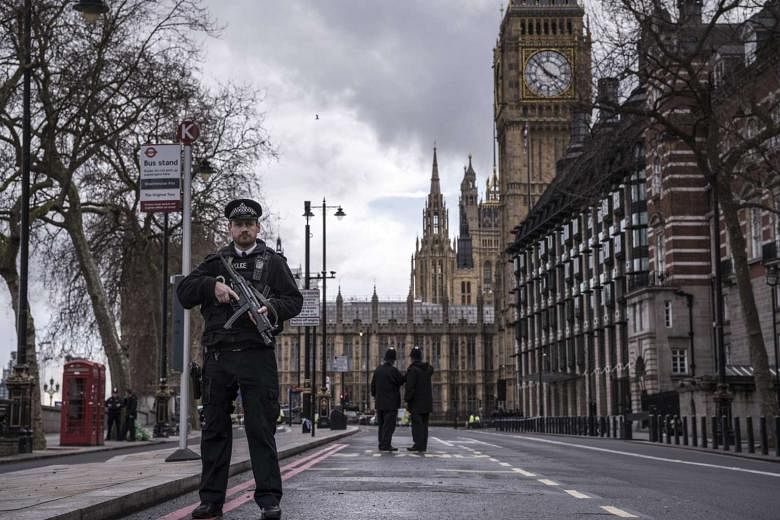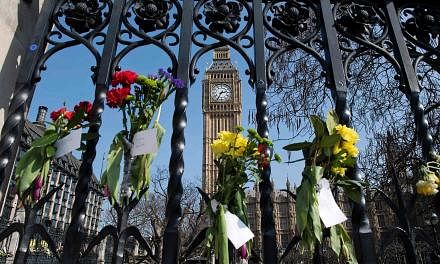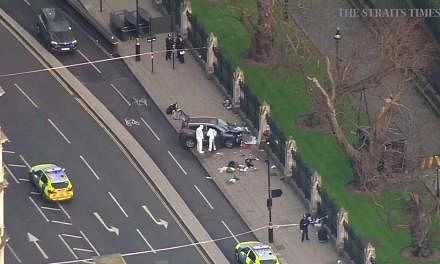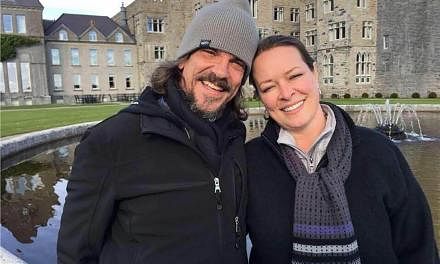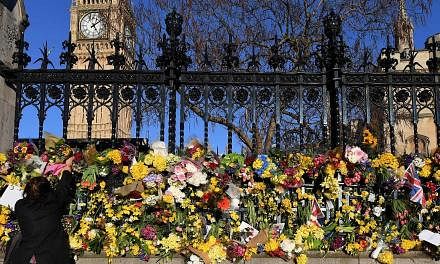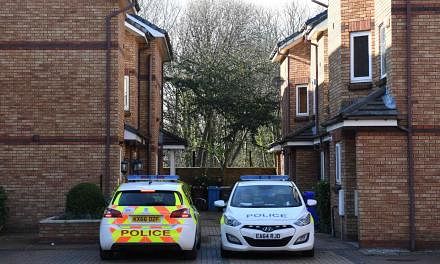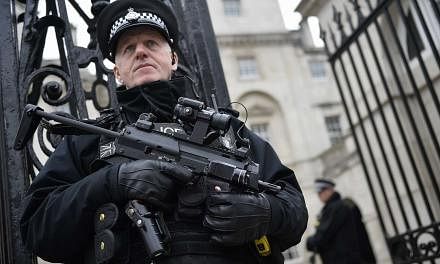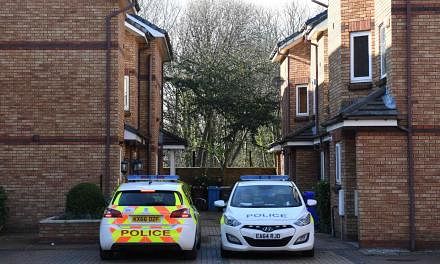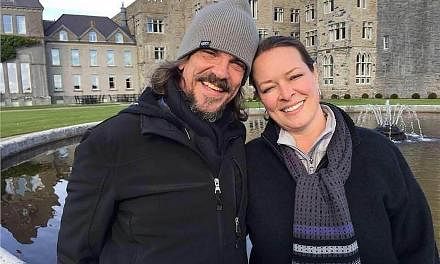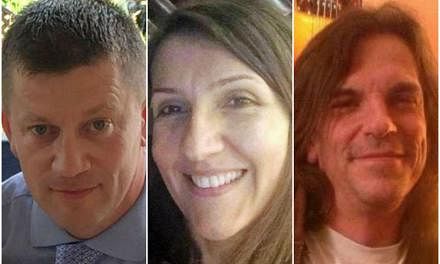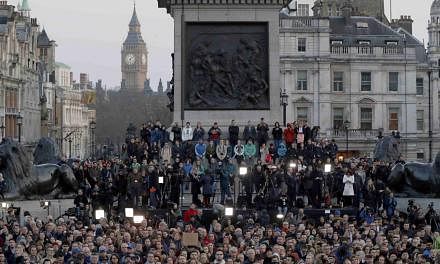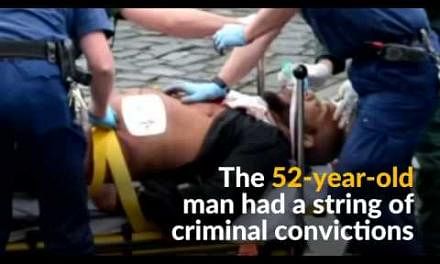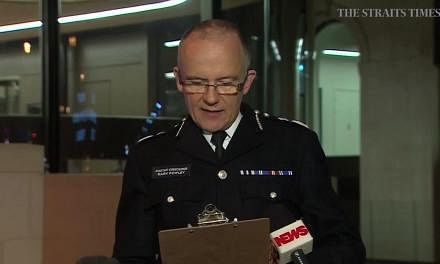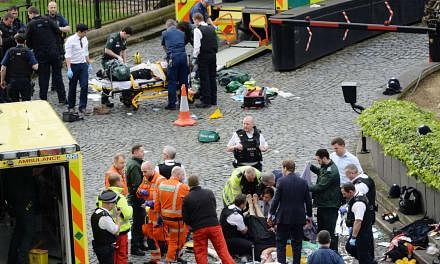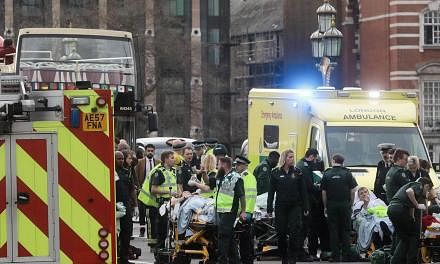LONDON (BLOOMBERG) - Prime Minister Theresa May had just cast her vote for a pensions Bill when she was told the British Parliament was under attack.
Minutes earlier, the tourists that thronged Westminster Bridge, taking selfies in front of Big Ben, had scattered as a car careened down the sidewalk towards them, before crashing into the railings next to the famous clock tower.
There were shouts as the driver jumped from the wreckage and ran through the crowds around the corner towards the huge iron gates of Parliament that are supposed to keep intruders out.
Those gates have to be kept at least partially open when lawmakers are voting, to allow them to get into the building before the vote is over. They are guarded by police whose days are generally spent giving directions and posing for photos with tourists.
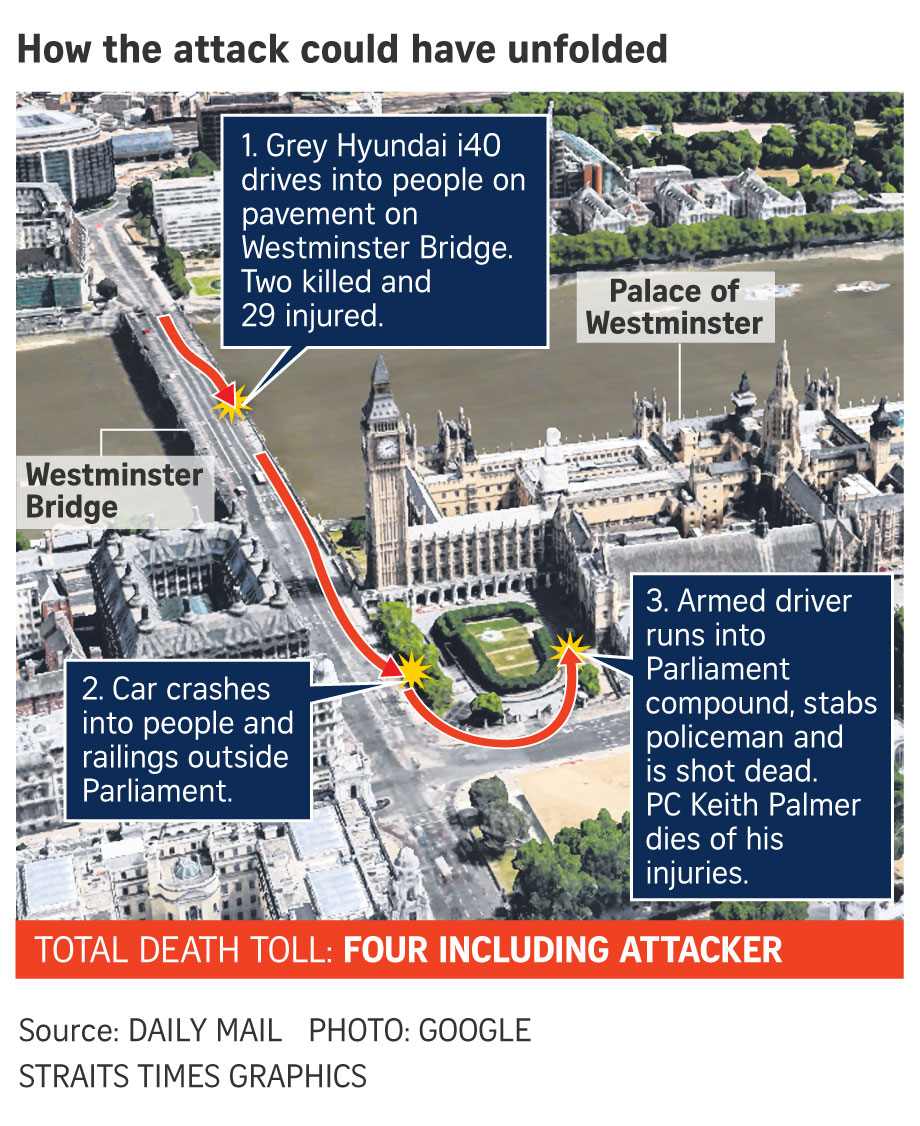
One officer, who was unarmed, tried to stop the intruder. He was stabbed. A plain-clothes colleague shouted a warning to the attacker and then opened fire with a handgun. He fired several times.
Journalists with offices in Westminster, including Bloomberg reporters, could see the events unfolding outside their windows.
Moments later, the wounded policeman and the assailant were both lying on the cobbles outside Parliament. One officer with a sub-machine gun kept it aimed at the downed attacker, while his colleagues tried to keep him alive.
Others moved to help the policeman the attacker had stabbed. Mr Tobias Ellwood, a former Army captain who is now a Foreign Office minister, ran to give first aid. Mr Ellwood, who lost his brother in the 2002 Bali bombing, tried to put pressure on the wounds. Both the attacker and the wounded police officer died.
Long foreseen
Meanwhile, Parliament was going into well-rehearsed lockdown procedures. An attack like this has long been expected by security officials. Two decades ago, visitors could walk into Parliament unchecked. Since then, security has been progressively tightened, with low walls erected that are designed to stop vehicle attacks. Underneath the stone, there are metal foundations deep into the ground.
The emergency plan sets out that the thousands of people who work in the network of Parliament's buildings should stay where they are unless they are under direct attack. Members of Parliament were shut into the chamber of the House of Commons for hours.
Others were evacuated to Westminster Abbey, another of the ancient buildings nearby.
The Prime Minister was whisked to a secure location - her office would confirm only that she was safe - leaving fellow Cabinet members behind her.
Unused stretcher
Outside, police officers were joined by ambulance crews and an air ambulance landed on the grass in the middle of Parliament Square. The rhythm of CPR continued where the attacker lay until shortly before his body was lifted into an ambulance.
A gray sheet was placed over the body of the dead officer and a gurney - meant to take him to hospital - lay unused at his side, next to an abandoned ambulance.
Now the priority was to establish whether the attack was over. Scotland Yard, the headquarters of London's police, is next door to Parliament, and elite firearms units, some wearing body armour over their civilian clothes, ran to the scene.
Other officers were closing off the roads around Parliament, some of London's busiest thoroughfares.
On the bridge, paramedics were rushing to help those who had been hit by the car before it crashed. Three French schoolchildren were among the injured. Police said they had early reports that a woman was in the water.
"I was walking across Westminster Bridge. I heard a wheel hit a curb, quite a large crunch noise, clearly hitting people as it came towards me," said Mr Rob Lyon, 34, a marketing director who was at the scene. "I saw people being hit by a car at speed. I just went into shock mode."
Squads of police, some carrying submachine guns, others handguns and bulletproof shields, fanned out across the Palace of Westminster as rumors flew about what was going on. There were suggestions on social media that another attacker was on the loose somewhere in Parliament. Officers were stationed in corridors telling people to return to their offices.
Gradually, police started to evacuate the buildings, leading groups of lawmakers, staff, journalists and kitchen workers in their white chefs' overalls into Westminster Hall, one of the oldest buildings in Europe, completed in 1099. Just yards from its doorway, the body of the downed officer still lay.
There, workers and lawmakers stood around together talking over the day's events. Health Secretary Jeremy Hunt spoke with reporters. A group of boxers on a visit stood around in their track suits. Mr Ed Miliband, the former Labour Party leader, kicked his heels with everyone else.
They were all potential witnesses, police told them, as night fell.
